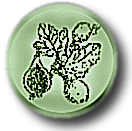Subsystem: One-carbon metabolism by tetrahydropterines
This subsystem's description is:
C1 metabolism is a key regulatory factor of catabolic and anabolic pathways. it provides a controlled flux through the C1 pool. It encompasses the transfer of C1 compounds and their reduction and oxidation.THF carries C1 units at the oxidation levels of formate( as 5-, or 10-formyl-THF,5,10-methenyl- or 5-formamino-THF), formaldehyde (as 5,10-methylene-THF) and methanol (as 5-methyl-THF).
For more information, please check out the description and the additional notes tabs, below
| Diagram | Functional Roles | Subsystem Spreadsheet | Description | Additional Notes | Scenarios | |||||||||||||||||||||||||||
Oops! We thought there was a diagram here, but we can't find it. Sorry
C1 metabolism is a key regulatory factor of catabolic and anabolic pathways. it provides a controlled flux through the C1 pool. It encompasses the transfer of C1 compounds and their reduction and oxidation.THF carries C1 units at the oxidation levels of formate( as 5-, or 10-formyl-THF,5,10-methenyl- or 5-formamino-THF), formaldehyde (as 5,10-methylene-THF) and methanol (as 5-methyl-THF). Overview: The origin of the C1 units entering at the various levels are: 1:formyl-THF:formate (Formate-THFligase) 2:5-formimino-THF: degradation products of histidine (glutamate formamino transferase) and xanthine .Formamino-THF cyclodeaminase is ina related pathway 3:5,10-methylene-THF: serine, betaine degradation products. C1 units are provided by: 1:10-formyl-THF: for purine and N-formylmethionyl-tRNA formation 3:5,10-methylene-THF: for biosyntheses of thymidine-5'P, coenzymeA and serine 2:5-methyl-THF: for methionine biosynthesis. The revirsible interconversions of C1 compounds take place by formate-THF ligase, methenyl-TNF cyclohydrolase and methylene-THF dehydrogenase. In anymals they are combined intyo a trifunctional enzyme. In bacteria several different combinations of encoding of these functin are noticed. The enzymes converting methylene-THF to formyl-THF, methylene-THF dehydrogenase, and methenyl-THF cyclohydrolase are encoded by genes (mtdA and fch)unique to methylotrophs, while in most known bacteria, both reactions are performed by a bifunctional enzyme encoded by folD. While mtdA and fch are cotranscribed and are a part of the serine cycle gene cluster, the gene encoding formyl-THF ligase (ftfL) is located elsewhere on the M. extorquens AM1 chromosome, and the encoded polypeptide shows high similarity to known formyl-THF ligases. Good overview on methylotrophs: http://www.pubmedcentral.gov/articlerender.fcgi?tool=pmcentrez&artid=154073. http://jb.asm.org/cgi/content/full/184/6/1750?view=long&pmid=11872727 http://www.pubmedcentral.gov/pagerender.fcgi?artid=246091&pageindex=2#page http://jb.asm.org/cgi/content/full/187/4/1523#F1 Pseudomonas C1-assimilation via glyoxylate cycle:http://www.pubmedcentral.gov/pagerender.fcgi?artid=246141&pageindex=5 Serine hydroxymethyltransferase (GlyA)(look in 'Serine-glyoxylate cycle' SS ) is a traditional enzyme found in most known organisms, where it functions in supplying C1 units in the form of methylene-THF for biosynthetic pathways, for instance, purine biosynthesis. It may play role of Threonine aldolase (see 'Threonine degradation' SS) in some organisms. Variant code: the most conservative patterns of functions involved in one-carbone metabolism by tetrahydropterines. 3,6-one or two stages of methanogenesis (or methylen degradation in case of Burkholderia) pathway are present. Presence of FTCL: biosynthesis of 5,10-methenyl-THF de-Novo Currently selected organism: Anabaena variabilis ATCC 29413 (open scenarios overview page for organism)

| ||||||||||||||||||||||||||||||||




